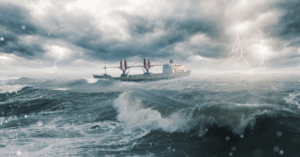


Ocean workers are facing more risks than ever, with one in four reporting injuries or harm on the job in the past two years, according to a new global survey.
The data comes from Lloyd’s Register Foundation’s latest “World Risk Poll – Focus On” report, created in partnership with Gallup. The poll covered responses from 147,000 people working in various professions worldwide and revealed that seafaring and related ocean-based jobs are among the most dangerous.
The survey categorised “ocean workers” as anyone who works on or near the sea-including seafarers, fishers, and dockworkers. Among this group, 25% said they had experienced physical harm or injury related to their job in the last two years.
This figure is much higher than the global average of 18% across all other industries, and more than double the injury rate in the safest field-the utilities sector.
A major concern raised by the report is the lack of safety training in ocean-related professions. Two-thirds (68%) of ocean workers said they have never received any occupational safety and health (OSH) training, and only 25% had received any training in the last two years. By comparison, 38% of workers in shoreside industries reported receiving OSH training.
The report also highlighted how ocean workers are more affected by dangerous weather than other workers. One in three ocean workers (33%) said they had suffered serious harm from severe weather-such as storms or rough sea conditions in the past two years. For other industries, that figure was 20%.
Despite facing high levels of risk, many injured ocean workers choose not to report the incidents. Only 41% said they had reported their injury or harm to anyone, ten percentage points lower than the average across other professions.
While the report uses the term “ocean workers” broadly, it also points out that these statistics include fishing industry workers, who are often exposed to greater dangers than those in commercial shipping.
In the United States, the death rate in the fishing industry is 28 times higher than the national average across all job sectors. Globally, the Pew Charitable Trusts estimates that around 100,000 people die each year while working in the fishing industry. Many of these deaths go unreported, particularly in regions where illegal, unregulated, or exploitative fishing practices are common.
The president of the World Maritime University said that seafaring and commercial fishing have long been seen as some of the world’s riskiest jobs. He stated that ocean workers are now facing even greater challenges due to the increasing impact of climate change. He also discussed about the importance of using updated data like the World Risk Poll to shape better policies that protect both ocean workers and the environment.
A former seafarer and current international operations manager at the International Seafarers Welfare and Assistance Network (ISWAN) explained that life at sea brings not only physical risks but also emotional and mental pressure. He pointed out that seafarers often work with multinational crews, are separated from family for long periods, and deal with loneliness and job insecurity. He said that insufficient training and fear of losing their jobs also contribute to anxiety and stress, and stressed that better safety education is needed to support their well-being.